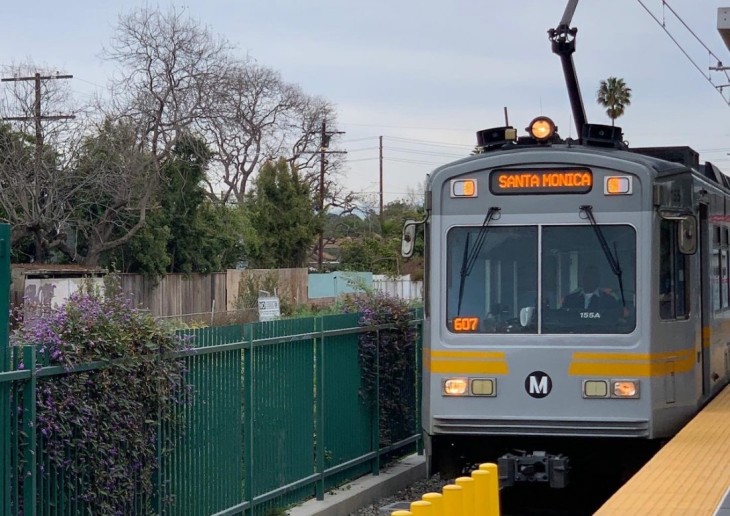
By now, most residents have heard of Santa Monica’s 8,895-unit overall mandate and the 6,168-unit affordable housing subset. This general magnitude of Santa Monica’s mandated housing numbers has been floating around for almost 3 years now. Then there is zoning. The state has changed our reality there too. Prior to 2019, most people were only vaguely aware of these concepts, if at all. Local land use issues were not on the average person’s radar.
While we were sleeping
Stepping back a moment, it’s clear that a huge change in governmental control has occurred, seemingly by stealth. Why is our city, or any city, being mandated housing numbers by the state? How do we know these numbers are appropriate? What is the process and what are the objectives? Why is this so contentious?
Contentiousness in any issue originates when there is no clear data-driven solution to a problem. Opinions then become the predominant factor in discussions and agenda setting. The situation quickly becomes worse when the issue is inappropriately defined. The final complication is inserted when the government gets involved to impose a one-size-fits-all “solution.”
How do “we” want to define the problem…and who is the “solution” for?
The only thing that is certain is that there is an affordability problem in housing. At this point things start to diverge. Some say the cause is financial inflation driven by the inflows of huge amounts of money, money that had never been part of the residential housing market which was traditionally priced in terms of the local market economy. The mainstream argues it is a deficit in supply. These unresolved origin conflicts provide the opening for the narrative to become overwhelmed by opinion rather than guided by an objective assessment of the facts. Opportunities arise for an agenda-driven approach by special interests and political opportunists.
The first clue that all this land use is agenda-driven and not solutions-driven is the newly centralized control of land use at the state level. Is it really possible for a particular city’s issues be solved by a bureaucracy hundreds of miles away? It depends on the problem being solved. In this case, the “problem” to be solved has been determined to be the elimination of local regulation of residential development to spur supply, in indirect service to the affordability issue. Affordability has therefore been redefined as exclusively a supply issue to justify this “solution.”
The superficial economics aligned with this straightjacketed concept require two key simplistic assumptions. First, that real estate values behave like widgets – the more you “make” the cheaper they get. The second is that housing is a driver of economic growth rather than an outcome of economic forces. Both are fundamentally flawed.
The first assumption conflates supply of land with supply of stuff built on the land. Real estate value is entirely locational. Location is, by definition, the land. And you can’t make more land at any given location. Location drives demand of all kinds – shelter, recreation and investment.
The first assumption also artificially simplifies housing into units, regardless of type. This is essential for the top-down government modelling that produces the mandates. A two-bedroom apartment is identical in utility and desirability as a two-bedroom detached house. People do not invest in long commutes to get to their apartments. In fact, studies indicate that it is the higher-income groups that comprise the super commuter demographic. Of course, this reaffirms the proposition that housing unit types are not interchangeable.
Finally, as the pandemic has illustrated, economic development is driven by access to high skill sets that are no longer tied to physical locations. Technologically-enabled work from home migrations have been almost entirely comprised of flows out of high-density areas to low-density (and usually more affordable) areas.
But then, when the actual goal of centralized governmental initiatives is simply to appear to be doing something to solve a problem, rather than actually and accurately defining the real problem to be solved, reality conveniently ceases to be a factor that needs to be considered.
I’m the (government). It does not have to make sense
So, with a definitional straightjacket firmly established that ignores critical fundamentals, marketing catch phrases can then drive stated goals and strategies that simply have to reference affordability. That’s when things get creative. The California state, and state-affiliated governmental entities, have stated the following objectives:
- “…allow for the construction of sufficient low-income deed-restricted units and market-rate units by 2050 to drive down the housing cost to year 2000 levels.” [1]
- “…ensure no Californian pays more than 30 percent of their income on housing by the year 2050.” [2]
- The housing mandates are “More than just being a high number or an aspirational goal…”[3]
In addition to these stated “goals”, there are numerous imbedded goals that are turn traditional housing patterns on their head, further complicating the creation of coherent, realistic and actionable initiatives:
- Densification / infill on very expensive land, replacing suburban expansion in undeveloped areas with highly affordable land, driven by…
- Redefining the historical approach to jobs and housing from a regional basis that assumes residential location is generalized to jobs centers so that residents do not have to move for every job change to a city-specific basis approach where the matching of jobs to housing is much more difficult.
- Using city political boundaries to assign housing unit quotas to address regional issues, which results in Santa Monica having a mandated 6,158 affordable units in its 8.4 sq miles while Los Angeles places its affordable housing overlay not next to Santa Monica but in the San Fernando Valley.
- Elimination of parking / private transportation on the basis of environmental goals and infill concepts without pre-positioning viable alternatives for the people that are supposed to populate these potential new housing developments
Policy evaluation using the bumper car methodology
As with most top-down command economy approaches, the thorny problems created by objectives that are incompatible with fundamental economics are ignored until failure is either plainly evident or comprehensively created. For example:
- What investor/developer would want to invest in a development proposition knowing upfront that when they are done, the project will be worth less than when they began? In fact, it will be worth so much less that it will reduce property values to levels not seen in over 20 years.
- What kind of economic damage to homeowners, multi-family building and commercial property owners would ensue with a housing value collapse that would drive down housing values to year 2000 levels?
- How are people going to be voluntarily matched to housing units and locations so that no Californian pays more than 30 percent of their income on housing by the year 2050 regardless of what drives local real estate market values such as resort locations by the beach?
- Densification drives up the cost of land, making the provision of increasingly valuable and critical land-intensive social amenities such as parks, playgrounds and aquatic centers for multi-family unit dwellers even harder to create.
- How does the population densification into multi-family housing units without parking align with the need for private charging capability to make the electric vehicle future even remotely viable?
- Affordable housing does not generate material (or any) tax revenues for services, parks or infrastructure while municipal revenues are significantly reduced by targeting municipally-owned land used as commercial infrastructure for siting, driving long term financial imbalances and increasing the cost of housing by inflating parcel tax requirements.
- Environmental justifications never seem to acknowledge that and estimated 51% of the lifecycle carbon from a typical residential development is emitted before the building is even opened. Moreover, making bricks and steel creates vast amounts of CO2, with cement alone causing 8% of global emissions.[5] Those emissions are also never compared to options such as retrofitting existing housing with solar (esp. low-rise single-family with high ratios of solar collector area to inhabitant) to significantly reduce existing housing’s greenhouse gas (GHG) footprint.
- Would people lose their housing in an idealized “balanced” jobs/housing arrangement if they changed to jobs located outside the designated city? And, what if they want a detached single-family home to raise their family? How is that to be provided in an idealized “balanced” arrangement?
The usefulness of alternate realities
In many discussions, what we hear are the phrases such as “best practices for designing cities.” What this approach reflects is the visualization of an idealized clean-sheet community that completely ignores the fact that the starting point is legacy cities that, in Santa Monica’s case, are over 100 years old, and have been built deeply imbedded transportation and energy supply arrangements that are then summarily dismissed without available and economically viable replacement plans. Then, there is no acknowledgement, let alone a plan for, the astronomical legacy city retrofitting cost imbedded in the advancement of such “greenfield” policies.
When reality does interfere in the narrative building process, such as with the increase in mortgage rates pricing out potential home buyers (i.e., the “affordability” issue), outright denial is the Go To solution. This was demonstrated by a recent New York Times a story titled: “We Need to Keep Building Houses, Even if No One Wants to Buy.”[4].
Which gets us back to the current state mandate of 8,895 units for Santa Monica’s and 2.5 million units overall for California to be built by 2029 in the current eight-year state housing cycle. After 2029, a new governmental housing cycle starts. And eight years after that, yet another…
To paraphrase a famous Dilbert quote, “I’m the (government). It does not have to make sense.”
By Marc L. Verville for SMa.r.t. (Santa Monica Architects for a Responsible Tomorrow)
Mario Fonda-Bonardi AIA, Planning Commissioner; Ron Goldman, Architect FAIA; Dan Jansenson, Architect, Building & Fire-Life Safety Commissioner; Michael Jolly, AIRCRE; Thane Roberts, Architect; Robert H. Taylor, Architect AIA: Sam Tolkin, Architect/Planning Commissioner; Marc L. Verville M.B.A., CPA (inactive)
References:
[1] The Association of Bay Area Governments (ABAG) summarized the goals in their May 2021 “Modelling Report”
[2] Preamble to the draft California Assembly Bill (AB) 2053
https://leginfo.legislature.ca.gov/faces/billTextClient.xhtml?bill_id=202120220AB2053
[3] California Department of Housing and Community Development
https://storymaps.arcgis.com/stories/94729ab1648d43b1811c1698a748c136
[4] We Need to Keep Building Houses Even If No-one Wants to Buy – NY Times 07-23-2022
https://www.nytimes.com/2022/07/23/business/housing-market-crisis-supply.html
[5] Royal Institution of Chartered Surveyors quoted in “Construction companies told to stop knocking down buildings” BBC 09-24-2021


























